Text and Media Resources
-
PUBLICATIONS BY INCARCERATED YOUTH
Find here Free Write Arts & Literacy anthologies and writing by incarcerated young people as showcased in Teen Vogue.
-
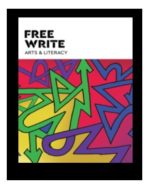 Free Write Arts & Literacy Anthologies
Free Write Arts & Literacy AnthologiesAnthologies of writing and visual art produced by young people in the Cook County Juvenile Temporary Detention Center
freewrite.nitestages.com -

-
-
CRITIQUES OF INCARCERATION
Here are resources that challenge the assumption that systems of incarceration are inevitable and just.
-
 The School to Prison Pipeline
The School to Prison PipelineRachel Marie-Crane Williams and Project NIA
Published June 16, 2012
This zine takes a look at how the school-to-prison-pipeline disproportionately affects people of color, primarily men of color. It looks at the start of the juvenile justice system in 1899 and gives facts about arrest rates today. The end of the zine examines strategies and plans for reform and what we can do in our everyday lives.
Teaching tool: This book beautifully illustrates what the concept of the school-to-prison-pipeline is, and the traumas it engenders. It explains perfectly what the concept is and how it affects marginalized communities.
issuu.com -
 A GRAPHIC HISTORY OF JUVENILE JUSTICE IN ILLINOISissuu.com
A GRAPHIC HISTORY OF JUVENILE JUSTICE IN ILLINOISissuu.comRachel Marie-Crane Williams and Project NIA
Published June 16, 2012
Rachel Marie-Crane Williams created a wonderful resource here that examines the juvenile justice system in Illinois. The zine provides information from 1899 to 2010, and strategies, plans and ideas for reform.
Teaching tool: This is a self-explanatory book. If you want an accessible history of the juvenile justice system, then this is the book for you.
-
 GIRLS IN THE SYSTEMissuu.com
GIRLS IN THE SYSTEMissuu.comGIRLS IN THE SYSTEM
Rachel Marie-Crane Williams and Project NIA
Published on June 16, 2012
This zine tells the story of what happens to girls and women who enter the juvenile justice system at a young age. It challenges our understandings of who is at risk and what the risks are. At the end, we are shown strategies and plans for reform.
Teaching tool: This is recommended reading for young women starting at the middle school level. It is beneficial for understanding what can happen and what is happening, and how to fight and work around it. This comic book is a great building block.
-
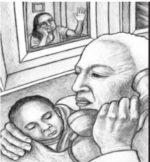 THE PRISON INDUSTRIAL COMPLEX IS...issuu.com
THE PRISON INDUSTRIAL COMPLEX IS...issuu.comChicago Prison Industrial Complex Teaching Collective,
Billy Dee (Illustrator), and Project NIA
Published on April 30, 2012
This zine was created for youth and adults alike to understand what the prison industrial complex is and the results of this system. It is a beautifully illustrated zine that shows the truth of who and how prisons affect our communities.
Teaching tool: In just a few pages, this zine fully explains what the prison industrial complex is, who it affects, and how it is still thriving to this day. This is recommended for all ages.
-
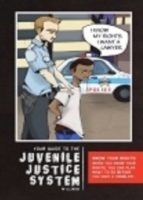 YOUR GUIDE TO THE JUVENILE JUSTICE SYSTEM IN ILLINOISwww.modelsforchange.net
YOUR GUIDE TO THE JUVENILE JUSTICE SYSTEM IN ILLINOISwww.modelsforchange.netMarjorie Moss
Published on November 9, 2011
Teaching tool: This zine is a guide for youth who may have interactions with officers and the juvenile justice system in Illinois. Be sure to keep updated on current laws and future changes so that youth can stay safe.
-
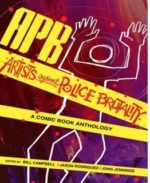 ARTISTS AGAINST POLICE BRUTALITY: A COMIC BOOK ANTHOLOGY
ARTISTS AGAINST POLICE BRUTALITY: A COMIC BOOK ANTHOLOGYBill Campbell, Jason Rodriguez, and John Jennings Oct 2015
This book examines issues such as police brutality and the prison industrial complex. Their art touches on several police shootings and their victims, such as Eric Garner, Tamir Rice, and Michael Brown, and delves into the historical aspects of the civil rights movements, including Martin Luther King Jr, Ruby Bridges, and several peaceful protests turned violent by the police. This anthology is meant to spark conversations about the ways systematic racism integrates itself into society. All proceeds are donated to the Innocence Project.
www.amazon.comTeaching tool: This series of comic strips are a great take on artists of color expressing themselves concerning issues of police brutality while also addressing cultural norms and the systemic racism faced by Black communities.
-
-
SPEAKING TRUTH TO POWER THROUGH THE VISUAL ARTS
Find here illustrated social criticism, recovered histories, graphic novels, and compelling comic book art.
-
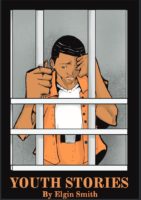 YOUTH STORIESartpedagogy.files.wordpress.com
YOUTH STORIESartpedagogy.files.wordpress.comElgin Smith and Project NIA
Published in 2011
Elgin Bokari-Smith is a Chicago based illustrator, DJ, and artist. He works at Free Write Arts & Literacy as a teaching artist in the Cook County Juvenile Temporary Detention Center, and as the Program Director for the organization. This zine follows his story of teaching a three-week course on comic books to the youth in the Cook County JTDC.
Teaching tool: If you want to know what it’s like to teach as a comic book artist to youth, then this is the book for you. There are lesson plans, strategies, and student art that show what it’s like to work with youth inside the Cook County Juvenile Temporary Detention Center.
-
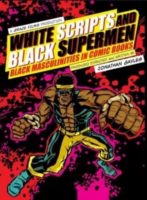 WHITE SCRIPTS AND BLACK SUPERMEN: BLACK MASCULINITIES IN COMIC BOOKSwww.youtube.com
WHITE SCRIPTS AND BLACK SUPERMEN: BLACK MASCULINITIES IN COMIC BOOKSwww.youtube.comCalifornia Newsreel Published on March 20, 2012
This video examines 40 years of changing portrayals of Black masculinity in a significant area of popular culture – action comic books. This genre’s reach and impact extended into other forms of cultural production, such as movies and animated TV series, and continues to influence contemporary representations.Teaching tool: This documentary is excellent for young people if they want to learn about the history of the first characters of color and the difficulties that result from when the creator does not share life experiences represented by the character.
-
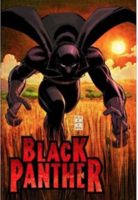 BLACK PANTHER VOLUME 1: WHO IS THE BLACK PANTHERwww.amazon.com
BLACK PANTHER VOLUME 1: WHO IS THE BLACK PANTHERwww.amazon.comReginald Hudlin (Author), John Romita (Illustrator)
Published on March 26, 2006
This volume of Black Panther includes books #1- 6 and tells the story of the Wakandan superhero from a gorgeously illustrated and cinematic point of view. Author Hudlin and illustrator Romita provide a fresh outlook on T’Challa’s explorations. The story is told using a fascinating and witty storyline and dialogue, and includes strong social commentary.
Teaching tool: This is the perfect introduction into the life of who the Black Panther is. Reginald Hudlin does an amazing job at capturing the hero of Wakanda.
-
 BLACK PANTHER: A NATION UNDER OUR FEET BOOK 1
BLACK PANTHER: A NATION UNDER OUR FEET BOOK 1Ta-Nehisi Coates (Author), Brian Stelfreeze (Illustrator)
Published on September 13, 2016
Award-winning and celebrated author Ta-Nehisi Coates brings a fresh new perspective to the fan favorite Black Panther. In the first book of this story’s series, T’Challa and Wakanda face one of their most challenging situations yet. A superhuman terror group called “The People” pose a great and violent threat to the Wakandan nation. In order to survive, the country must navigate the conflicts between necessary changes and their own pride and traditions.
www.amazon.comTeaching tool: Ta-Nehisi Coates provides a fresh perspective on the life of the Black Panther. Coates examines modern issues that countries face through the perspective of Wakanda. Perfect for the reader concerned with the modern era.
-
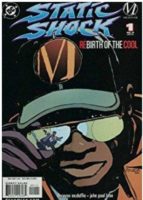 STATIC SHOCK, VOL. 1: REBIRTH OF THE COOL
STATIC SHOCK, VOL. 1: REBIRTH OF THE COOLDwayne McDuffie (Author), Robert L. Washington III (Author), and John Paul Leon (Illustrator) Published on June 2, 2009
Virgil Hawkin’s is your average teenage boy growing up in the city. He has to deal with high school, bullies, and girls – until a gas genetically changes him, giving him electric powers. He becomes Static, who now not only has to balance his high school life and family, but he must also protect his neighborhood.
www.amazon.comTeaching tool: Amazing graphic story about a teenager going through
high school as a young Black man in the hood who just so happens to develop super powers. If your youth of color like Spider-Man, they will love Static Shock. This comic book also addresses issues that are faced by the young Black community. It deals with gang violence, relationships, bullying, and angst regarding the government and police. -
 KINDRED: A GRAPHIC NOVEL ADAPTION
KINDRED: A GRAPHIC NOVEL ADAPTIONOctavia Butler, Adapted by John Jennings and Damian Duffy
Published on January 10, 2017
Octavia Butler’s most popular novel is converted here into a graphic novel format. Jennings and Duffy retell the story of Dana, a time travelling, modern Black woman who is charged with saving her family when she is transported back to the time of slavery. Dana must juggle her own identity, pride, and her family in this adaption of Butler’s timeless science fiction classic.
www.amazon.comTeaching tool: John Jennings and Damian Duffy do a marvelous job bringing the Octavia Butler novel, Kindred, into comic book form. This will be a very easy read for your teen readers.
-
 ICON: A HERO’S WELCOME (NEW EDITION)
ICON: A HERO’S WELCOME (NEW EDITION)Dwayne McDuffie (Author) and MD Bright (Illustrator)
Published on October 6, 2009
This title includes Icon #1-8 and introduces Augustus Freeman. Freeman is an alien with superpowers that crashes to earth in 1869 and is discovered by a Black slave. Freeman lives longer than his adopted family, surviving into the modern age, where he becomes an affluent and successful lawyer. He is inspired by his sidekick, Rocket, a teenage woman who challenges him to use his affluence and superpowers to help others and become the hero Icon. Icon and Rocket become the heroes of their community, but what will happen when life throws an unexpected situation into their lives?www.amazon.comTeaching tool: A Superman story done right, taking a more Afrocentric perspective. What would a Black man do with power, wealth, and invulnerability? Would they care for their community or live in privilege? These are just a few questions that are answered in this graphic novel. Icon is the name of the graphic novel, but the real hero of this story is his sidekick Rocket, a young lady who gains powers very fast, but soon becomes pregnant with her boyfriend from her youth, posing the question: How can you be a superhero and a mother? This is an amazing read for youth.
-
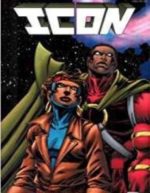 ICON, VOL. 2: THE MOTHERSHIP CONNECTIONwww.amazon.com
ICON, VOL. 2: THE MOTHERSHIP CONNECTIONwww.amazon.comDwayne McDuffie (Author) Published on June 8, 2010
This is the second volume of the Icon story. Rocket and Icon continue their adventures! This is a continuation of the Icon story with new characters introduced. Find out what happens when superheroes have to leave their post. How will they establish their legacy? Icon and Rocket are faced with the challenge of keeping the streets protected while handling their own personal issues.
Teaching tool: This is a continuation of the Icon story with new characters introduced. Find out what happens when a superhero has to leave their post. How will they establish their legacy? Icon and Rocket are faced with the challenge of keeping the streets protected while handling their own personal issues.
-
 HARDWARE: THE MAN IN THE MACHINEwww.amazon.com
HARDWARE: THE MAN IN THE MACHINEwww.amazon.comDwayne McDuffie (Author), Denys Cowan (Illustrator), and JJ Birch (Illustrator) Published on March 30, 2010. The Hardware story follows Curt Metcalf, an engineer who had been working for the business mogul Edwin Alva. Metcalf cuts his ties from Alva, and then learns that Alva and his business are involved in organized crime. Due to Alva’s position and privilege, law enforcement will not bring Alva to justice. Metcalf creates a super-armor and becomes Hardware in order to work against his former employer.
Teaching tool: Hardware is most definitely a book for more mature readers. This Tony Stark-esque Black man explores the anti-hero and the angry Black man trope. Hardware is hell-bent on revenge but discovers that there are consequences to vengeance. You may be the smartest person in the room and you may deserve more, but will you be truly satisfied when you get what you think you want?
-
 STILL I RISE: A GRAPHIC HISTORY OF AFRICAN AMERICANSwww.amazon.com
STILL I RISE: A GRAPHIC HISTORY OF AFRICAN AMERICANSwww.amazon.comRowan Owen Laid (Author), Taneshia Nash Laird (Author), and Elihu “Adofo” Bey (Illustrator)Published on February 3, 2009
This graphic novel takes an in-depth look at the history of Black Americans. This beautifully illustrated book spans eras from the days of slavery to Barack Obama’s presidential campaign. It celebrates the successes and triumphs of the Black community in the United States but also acknowledges the amount of work that still must be done.Teaching tool: This graphic novel goes through history from slavery all the way to the Obama- era in an easily accessible manner for a teen reader. None of it feels jarring or forced, just a very easy read where you learn a large amount of history in a short amount of time. The narrators in this graphic novel are fun and likeable and help to keep the story flowing. Recommended for middle schoolers to adults. There is partial nudity.
-
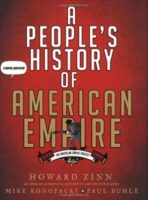 A PEOPLE’S HISTORY OF AMERICAN EMPIRE: THE AMERICAN EMPIRE PROJECT, A GRAPHIC ADAPTATIONwww.amazon.com
A PEOPLE’S HISTORY OF AMERICAN EMPIRE: THE AMERICAN EMPIRE PROJECT, A GRAPHIC ADAPTATIONwww.amazon.comHoward Zinn (Author), Mike Konopacki (Author), and Paul Buhle (Author)
Published on April 1, 2008
This is Howard Zinn’s A People’s History of the United States, now transformed into the accessible format of a graphic novel. This groundbreaking and necessary book changed the way that history is understood and how it is told. Again, Zinn, Konopacki, and Buhle are doing it again, but this time through graphics, once again altering how we understand the way history is told.
Teaching tool: A graphic novel adaption of Howard Zinn’s A People’s History of the United States. The same information as the book, put in an accessible graphic novel format. Perfect for any history buff.
-
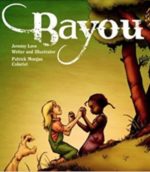 BAYOUwww.amazon.com
BAYOUwww.amazon.comJeremy Love
Published on June 2, 2009
South of the Mason-Dixon, a fantastic and mysterious land is born, filled with monsters and heroes. Bayou is the story of Lee Wagstaff, the young daughter of a Black sharecropper in Mississippi. Lee’s white friend, Lily, is kidnapped by an evil creature of the swamp. Lee’s father is accused of the kidnapping and is threatened with lynching. Now Lee must save her friend and her father by embarking on an amazing adventure, enlisting the help of another creature of the swamp, Bayou.
Teaching tool: Bayou is an amazing story, illustrated and written by Jeremy Love. There’s something magnificent about seeing characters of color drawn in this format. A very easy read for young readers.
-
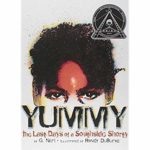 YUMMY: THE LAST DAYS OF A SOUTHSIDE SHORTYwww.amazon.com
YUMMY: THE LAST DAYS OF A SOUTHSIDE SHORTYwww.amazon.comG. Neri (Author) and Randy DuBurke (Illustrator)
Published on July 30, 2010
This graphic novel is loosely based on events that occurred in Chicago in 1994. The story follows a young boy named Roger who navigates the death of his classmate Yummy. Roger is forced to reexamine his understanding of good and bad, and how one must understand that both can exist inside one person.
Teaching tool: Yummy is a tale about a Southside shorty who has the desire to be a Black Disciple gang member. He does everything in his power to get their attention, and eventually kills a friend. This story is based on a true story, and is great way to explore what happens when a person is exposed to violent trauma at a very young age. Who knows what could have become of this young man if he had had proper guidance? This graphic novel is extremely beautiful and well told.
-
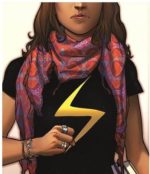 MS. MARVEL VOL. 1: NO NORMAL
MS. MARVEL VOL. 1: NO NORMAL- Wilson (Author), Adrian Alphona (Illustrator), and Sara Pichelli (Illustrator)
Published on October 28, 2014
This volume contains books #1-5. It follows the story of the all new Ms. Marvel, Kamala Kahn, a normal teenage girl from Jersey. Kamala finds herself gifted with new powers, but she must juggle the dangers she will face because of these gifts, and the dangers she will face because of her identity as a teen, a Muslim, and a woman.
Teaching tool: Great for all ages. If you have not read it, read it. This is one of the first Muslim Captain Marvel stories. It deals with a lot of issues, ranging from cultural identity to body positivity to representation. Kamala Kahn is the superhero of this century.
www.amazon.com -
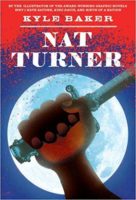 NAT TURNER
NAT TURNERKyle Baker
Published on June 1, 2008
This graphic novel tells the story of Nat Baker, a slave in Virginia who lead a slave rebellion. To some he is a hero, others a murderer. Kyle Baker tells his story and the story of the revolt in a historically accurate way that further exposed the evils and oppressive nature of slavery and slavers.
Teaching tool: This is an amazing, beautifully illustrated graphic novel about Nat Turner. If you have a learner that may not be confident in reading, this book does a wonderful job at telling history with very few words
www.amazon.com -
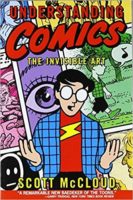 UNDERSTANDING COMICS: THE INVISIBLE ART
UNDERSTANDING COMICS: THE INVISIBLE ARTScott McCloud
Published on April 27, 1994
Scott McCloud shows all that goes into making a comic book, from story creation to publishing. After reading this, one will have a better appreciation of the art of book making, and will have the tools to create their own graphic novel.
Teaching tool: This is a great resource when trying to explain how a comic book is made and its functionality. Every classroom that wants to have comic books in it should have this book.
www.amazon.com -
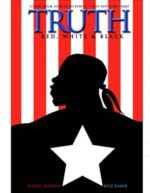 CAPTAIN AMERICA: TRUTH
CAPTAIN AMERICA: TRUTHRobert Morales (Author) and Kyle Baker (Illustrator)
Published on February 18, 2009
www.amazon.comThis story gives a look at what happened before Steve Rogers became Captain America and defeated the Axis Powers. What did it take for the perfect serum that gave him his super strength to be created? Captain America: Truth reveals the sacrifices that Black soldiers made through medical experimentation for America’s hero to be created.
Teaching tool: This book exposes the truth about how Black Americans’ bodies have been exploited for the furthering of medical research. A great introduction for students interested in the connections between health and race.
-
-
REENTRY
Find here examples of initiatives that work to support incarcerated youth in reconnecting to the world outside detention.
-
 D.O.E's New Tools to Support Reentry for Formerly Incarcerated Youth and Adults
D.O.E's New Tools to Support Reentry for Formerly Incarcerated Youth and AdultsThis program is aimed mostly aimed toward helping adults exiting the prison system, but also mentions the risks children of incarcerated adults face, and how reentry benefits the children as well.
The article lists five critical components of an effective reentry system:
- program infrastructure
- strategic partnerships
- education services
- transition processes
- sustainability
“A 2013 federal study of people released from state prisons found that 94 percent of incarcerated adults who were nearing reentry identified education as a key need.”
www.ed.gov -
 Businesses Building a Better Way for Formerly Incarcerated Youth
Businesses Building a Better Way for Formerly Incarcerated YouthThis article discusses organizations that aim to give access to jobs and other supports to youth that are going through reentry while making the transition, including Drive Change, Pop! Gourmet Popcorn, and Flikshop.
cfyj.org -
 Flikshop App Starts Business School in Local Juvenile Facility
Flikshop App Starts Business School in Local Juvenile FacilityThis article talks about The Flikshop School of Business, a school started from the founders of the Flikshop App (an app that helps connect incarcerated people to the community and to family members). The school is a blend of entrepreneurship and family engagement. Also, as the founder (Marcus Bullock) says, it’s about “giving the roadmap” to success from someone that knows the system.
www.bringinthecommunity.com -
 It Takes CURY J (pronounced "Courage")
It Takes CURY J (pronounced "Courage")The organization CURY J works to support previously incarcerated youth upon reentry, with an emphasis on their taking ownership over their choices to make better ones. While CURYJ does offer internships and paid positions, it is focused explicitly on safe space building. They have also passed bills and changed laws.
www.curyj.org -
 The Second Chance Act: Juvenile Reentry
The Second Chance Act: Juvenile ReentryMore than 1.3 million youth cycle through delinquency courts each year, which has a significant impact on their development and prospects for long-term success. As a result, juvenile reentry involves not only post-incarceration services for youth, but is also a process that:
(a) begins the moment a young person comes into contact with the juvenile justice system, and
(b) is engineered to help youth transition from system supervision to a crime-free, productive adulthood.
Young people typically face many challenges in making this successful transition. This pdf lists some detention centers that have incorporated The Second Chance Act Grants into their institutions as a way of attempting to address this challenge.
csgjusticecenter.org
-
-
THE TRANSFORMATIVE IMPACT OF THE ARTS ON STUDENT LEARNING AND GROWTH
Find here examples of research exploring the correlations between arts experiences and student learning and development.
-
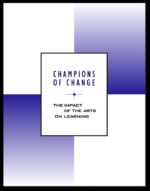 Champions of Change: The Impact of the Arts on Learning
Champions of Change: The Impact of the Arts on LearningThis watershed compilation of research studies published in 1999 launched a series of investigations that reframed arts learning as being more than an add-on for the gifted, and thereby opened up the exploration of the arts as a key catalyst in the cognitive and social development of young people. Of particular relevance is Shirley Brice Heath’s study on the ways that arts learning scaffolds a sense of agency, self-determined identity, speculative thinking, and a renewed envisioning of options among young people in under-resourced communities.
artsedge.kennedy-center.org -
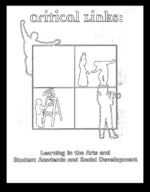 Critical Links: Learning in the Arts and Student Social and Academic Developmentwww.gpo.gov
Critical Links: Learning in the Arts and Student Social and Academic Developmentwww.gpo.govThis compendium and meta-analysis of numerous research studies on the impact of the arts on learning, published in 2002, builds on Champions of Change, and explores in specific detail relationships between arts programming and the development of a wide range of learning and social skills.
-
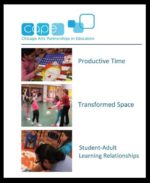 Supporting Communities through Arts Learning Environmentscapechicago.org
Supporting Communities through Arts Learning Environmentscapechicago.orgIn 2013, researcher Suzy Watts studied the arrangements of time, space, and student/adult learning relationships in the Chicago Arts Partnerships in Education’s after school arts and learning programs, and identified a positive relationship between effective youth development and the levels of three design indicators: student choice in defining productive uses of time, attention to transforming learning spaces, and the authenticity of collaborative working relationships between students and adults. These findings are mirrored in the design of Free Write Arts & Literacy programming.
-
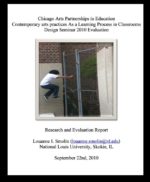 Contemporary Arts Practices as a Learning Process in Classroomscapechicago.org
Contemporary Arts Practices as a Learning Process in Classroomscapechicago.orgThis 2010 study by researcher Louanne I. Smolin for the Chicago Arts Partnerships in Education investigated the impact of introducing contemporary arts practices into Chicago public school classrooms, exploring how the following contemporary artmaking principles deepened classroom pedagogy:
- Interdisciplinary practice
Situating practice within the socio-cultural contexts of the students’ communities - Addressing contemporary issues that impact students’ present and future lives.
- Collaboration
- Discussion and dialogue among teachers, artists, students and the surrounding community.
- Documentation of both the processes and products of artmaking
- Employment of a reflective, critical, and analytic stance towards artmaking
These considerations mirror Free Write Arts & Literacy’s practices.
- Interdisciplinary practice
-
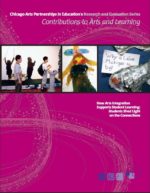 How Arts Integration Supports Student Learning: Students Shed Light on the Connections
How Arts Integration Supports Student Learning: Students Shed Light on the ConnectionsIn 2002, the Chicago Arts Partnerships in Education http://capechicago.org commissioned researcher Karen DeMoss to compare student response to art-infused teaching and learning in ten different classrooms in ten different Chicago public schools as compared to their response to similar content delivered in a traditional non-arts instructional manner by the same teachers to the same students. The students reported becoming less interested in content after traditional instruction, but more interested in similar arts-infused content after instruction, even to the point of pursuing information on the content on their own during out-of-school time. They also wrote more after given writing prompts following an arts-infused lesson, as compared to the amount of writing they produced after being given a writing prompt following a traditional lesson. This difference was especially pronounced for second language learners. And perhaps most intriguingly, lessons that were considered “too hard” after traditional instruction were valued by students as stimulating because they were challenging when delivered through an arts-integrated approach. The presence of the arts prompted students to redefine difficulty and complexity as positive attributes for what they wanted to learn.
capechicago.org -
 Reinvesting in Arts Education: Winning America's Future through Creative Schools
Reinvesting in Arts Education: Winning America's Future through Creative SchoolsDwyer, M. Christine (2011) President’s Committee on the Arts and the Humanities
In this document, a remarkably consistent picture of the value of the arts in a comprehensive Pre-K-grade 12 education emerges from a review of two decades of theory and policy recommendations about arts education.
files.eric.ed.gov -
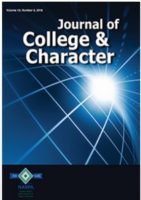 Promoting Self-Authorship to Promote Liberal Education
Promoting Self-Authorship to Promote Liberal EducationMarcia B Baxter Magolda (2009) Journal of College and Character Volume 10 – Issue 3: Self-authorship—the capacity to internally generate one’s own beliefs, values, identity, and relationships—is identified as a necessary foundation for transformational learning, based on a 22-year study of learning and development. Adults working with young people can support self-authorship by affirming the value of student voices, joining them in viewing their experiences as opportunities for growth, supporting them in analyzing their own problems, and by engaging in mutual learning with them. This requires respect for the complexity of their students’ life decisions, the discouraging of simplistic solutions, and the encouraging of learners to determine for themselves how they are to live their lives. This research concludes that this is accomplished by the sharing of authority and expertise with and among learners, and by young people and adults working interdependently with others to solve mutual problems.
www.tandfonline.com -
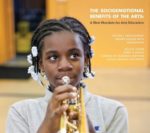 The Socioemotional Benefits of the Arts: A New Mandate for Arts Education
The Socioemotional Benefits of the Arts: A New Mandate for Arts EducationThis study found that students who participated in the arts exhibited increases in the domains of tolerance for other perspectives, growth mindset, and academic goal orientation.
wolfbrown.com
-

